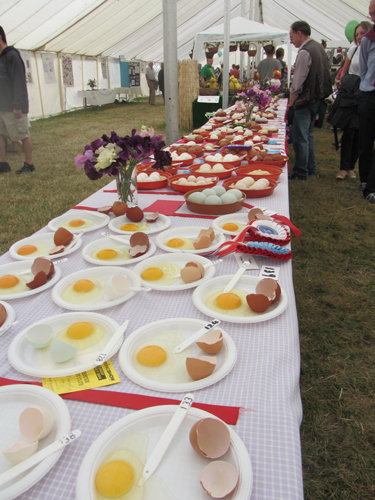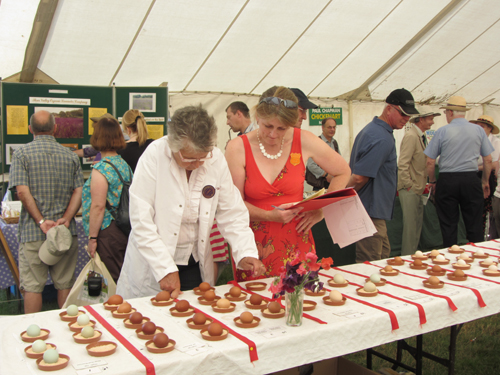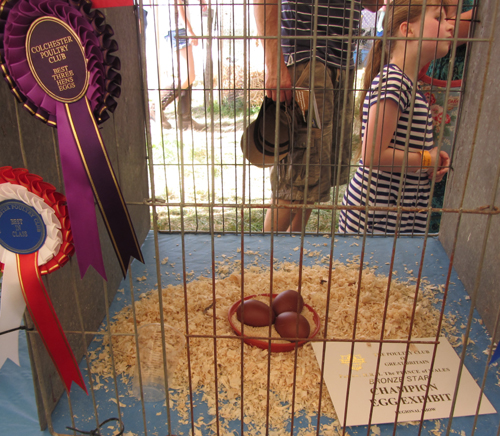Preparing For An Egg Show


Egg classes are divided into two main classes external and internal.
Externally the judge is looking at the shape of the egg, an ‘elliptical cone’. There should be more length than width; the top should be larger than the bottom. With the bottom being more curved. Bantam eggs tend to be more pointed. If a cross-section is taken at any point across the egg’s girth it should be a perfect circle. Shape is worth 25 points.
The judge will look at the size of the egg. Bantams should not exceed 42.5g (1½ oz) if the eggs weight is greater the Standards advises the judge to pass over the egg. A pullets egg weighs in excess of 49.6g (1¾ oz), with ducks around 70.9g (2½ oz). Bantam duck should not exceed 63.8g (2¼ oz). Size equates to 15 points.
Shell texture should be smooth, free from lines or bulges, evenly limed, smooth at each end, without roughness, porous parts or lime pimples and accounts for 20 points.
Colour is as specified by the Standard for the bird or the breed club standard. Colouring should be even. In the case of mottled or speckled eggs, regular mottling or speckling is preferred. Colour accounts for 20 points.
The final category looks at freshness, bloom and appearance.
The shell should be clean, without dull or stale appearance and free from blemishes such as stains and nest marks. Eggs may be washed, but not polished, and accounts for another 20 points.
With a plate of three or six eggs 5 more points are added for matching and uniformity.
Internally the judge looks at the yolk which should be rich, bright golden-yellow, free from blood streaks or ‘meat’ spots. Well-rounded and well-raised from the centre of the albumen. One uniform shade. The germ spot should not be discoloured and there should be no sign of embryo development. Yolk accounts for 30 points.
The albumen should be clear with no sign of blood spots or cloudiness and preferably with no tint of colour. It should be dense; particularly around the yolk and the differentiation between this thick albumen and the thin outer should be distinct. Waterfowl albumen is more viscous and distinct than that of a hen’s and therefore has its own class. The albumen accounts for 30 points.
Chalazae is the white thick cord opposite each other that should be attached to the yolk, keeping it in the centre of the inner albumen. Again it should be free from blood and ‘meat’ spots. The Chalazae accounts for 10 points.
The airspace should be small, about 1.5 cm (½ in) diameter (1 cm (2/16 in) bantams); the membrane should adhere to the shell. It should be placed at the broad (dome) end, ideally just to one side. The airspace accounts for 10 points.
The final category is freshness which is indicated by the small, taut airspace and unwrinkled top surface of the yolk which should be raised and not lacking in height. A stale albumen lacks differentiation and is watery and runny, this accounts for 20 points.
